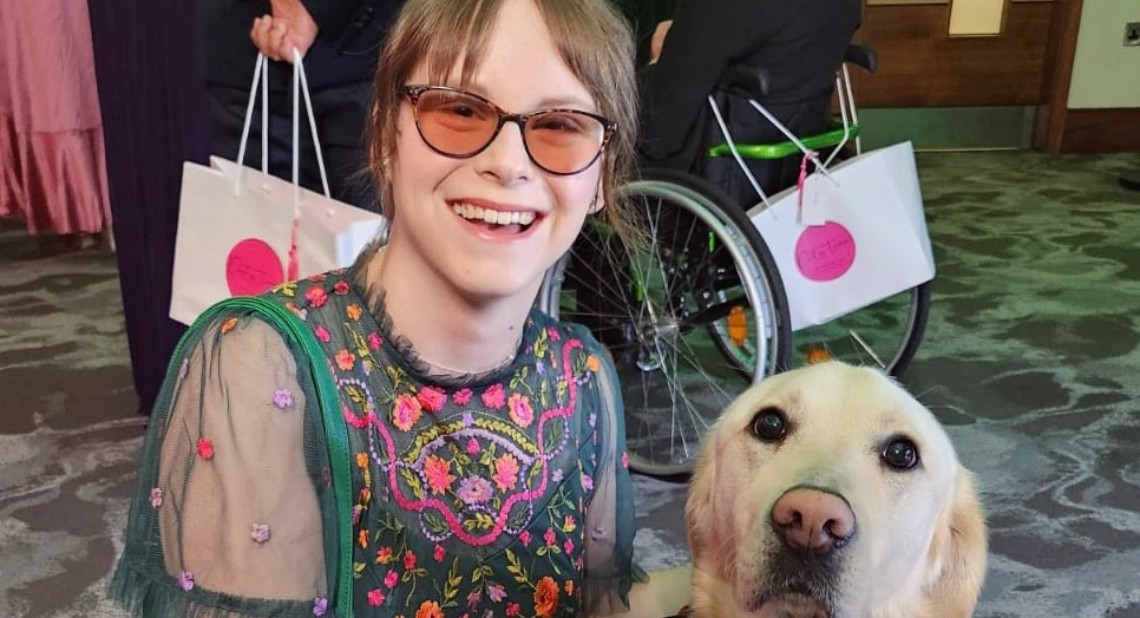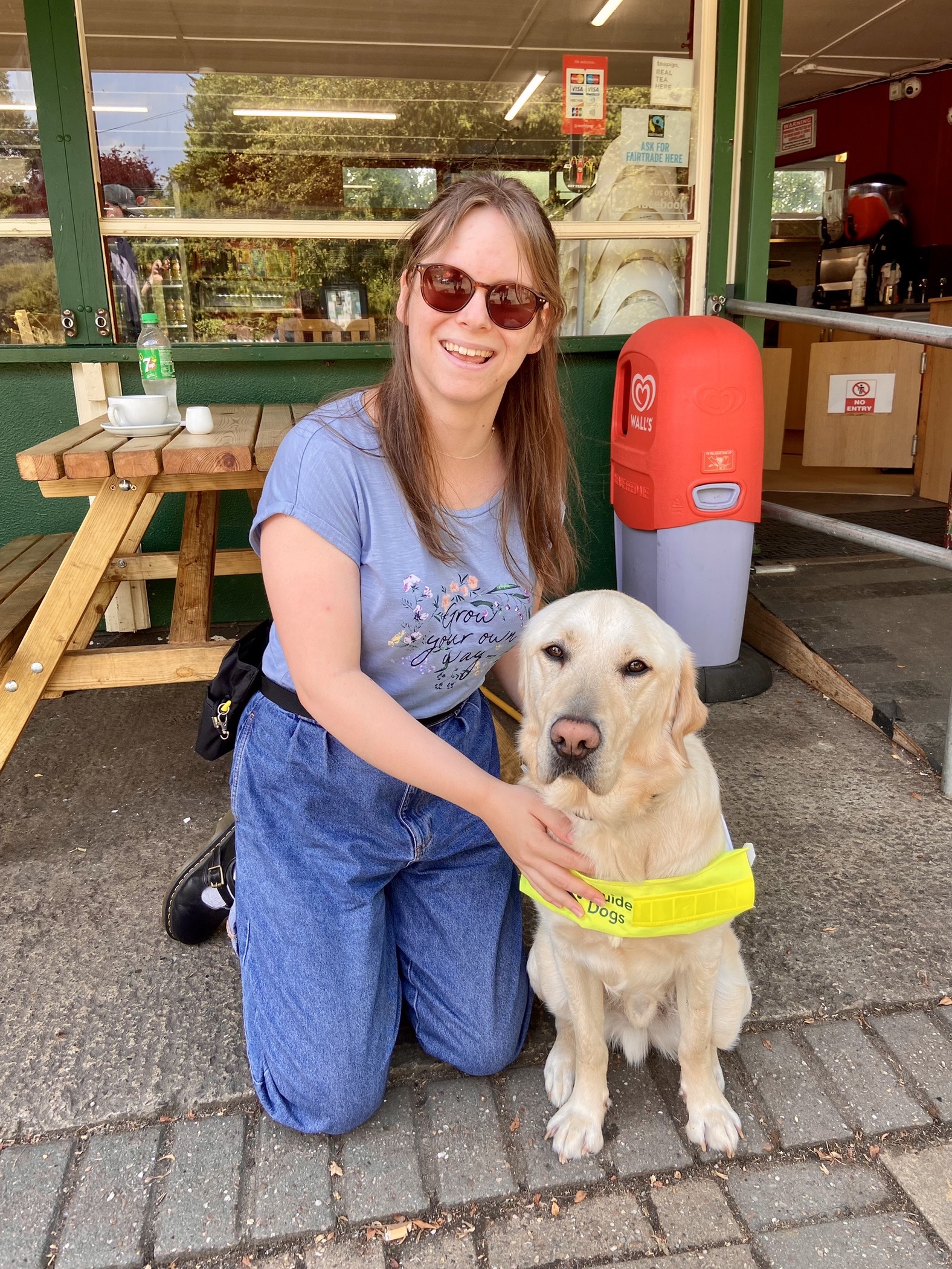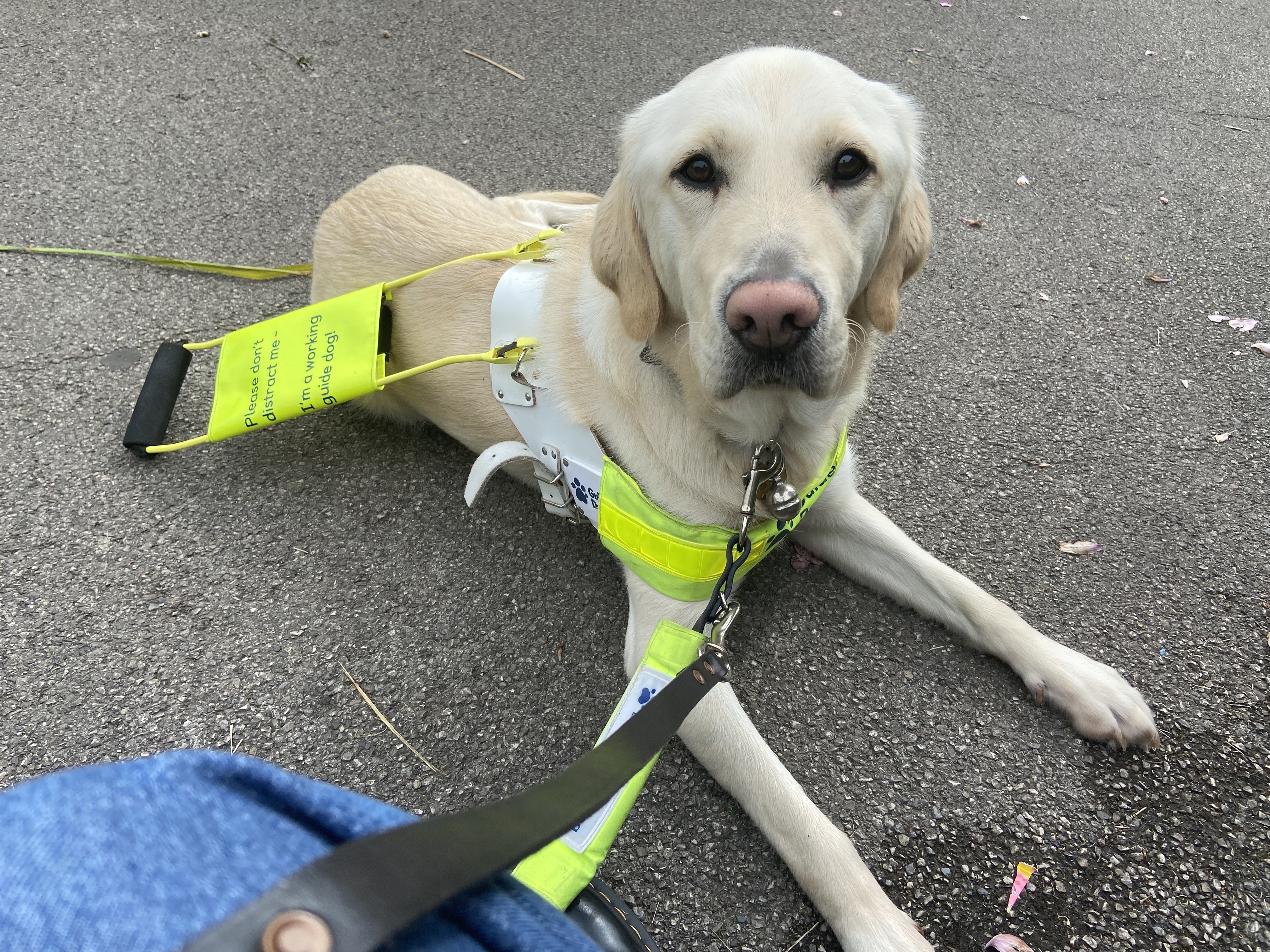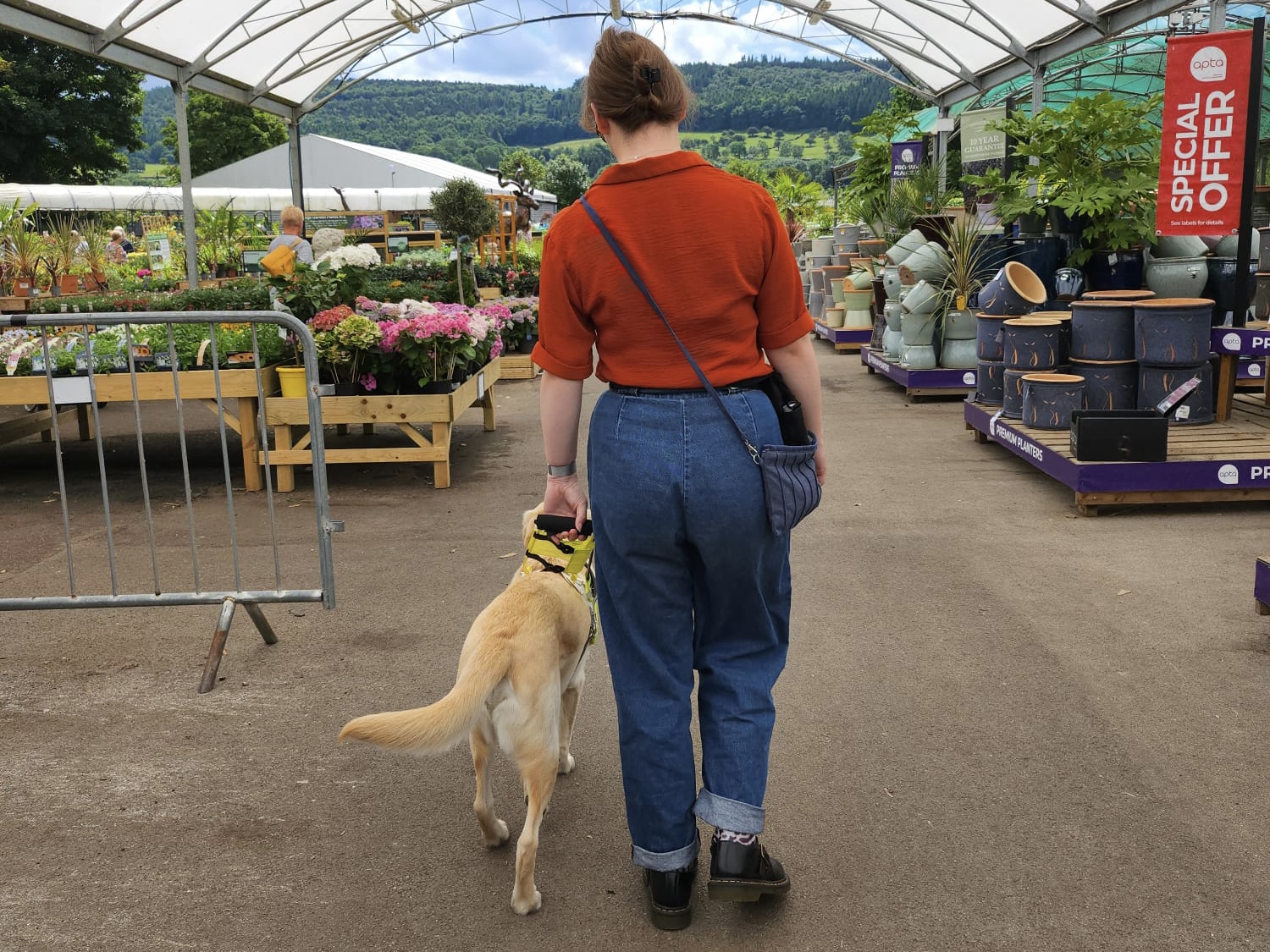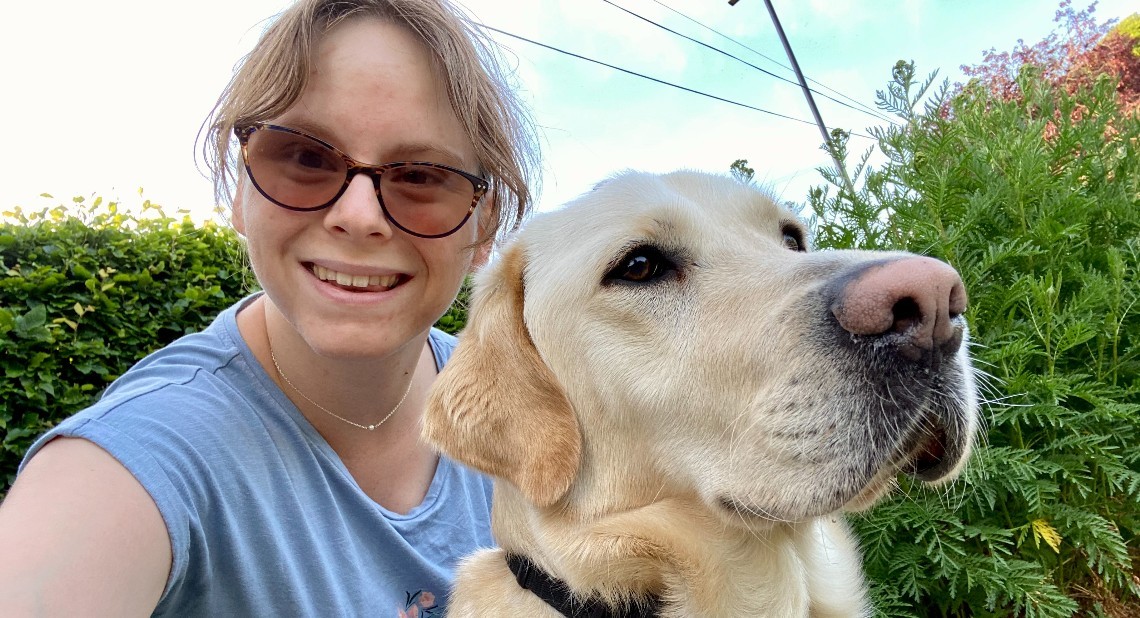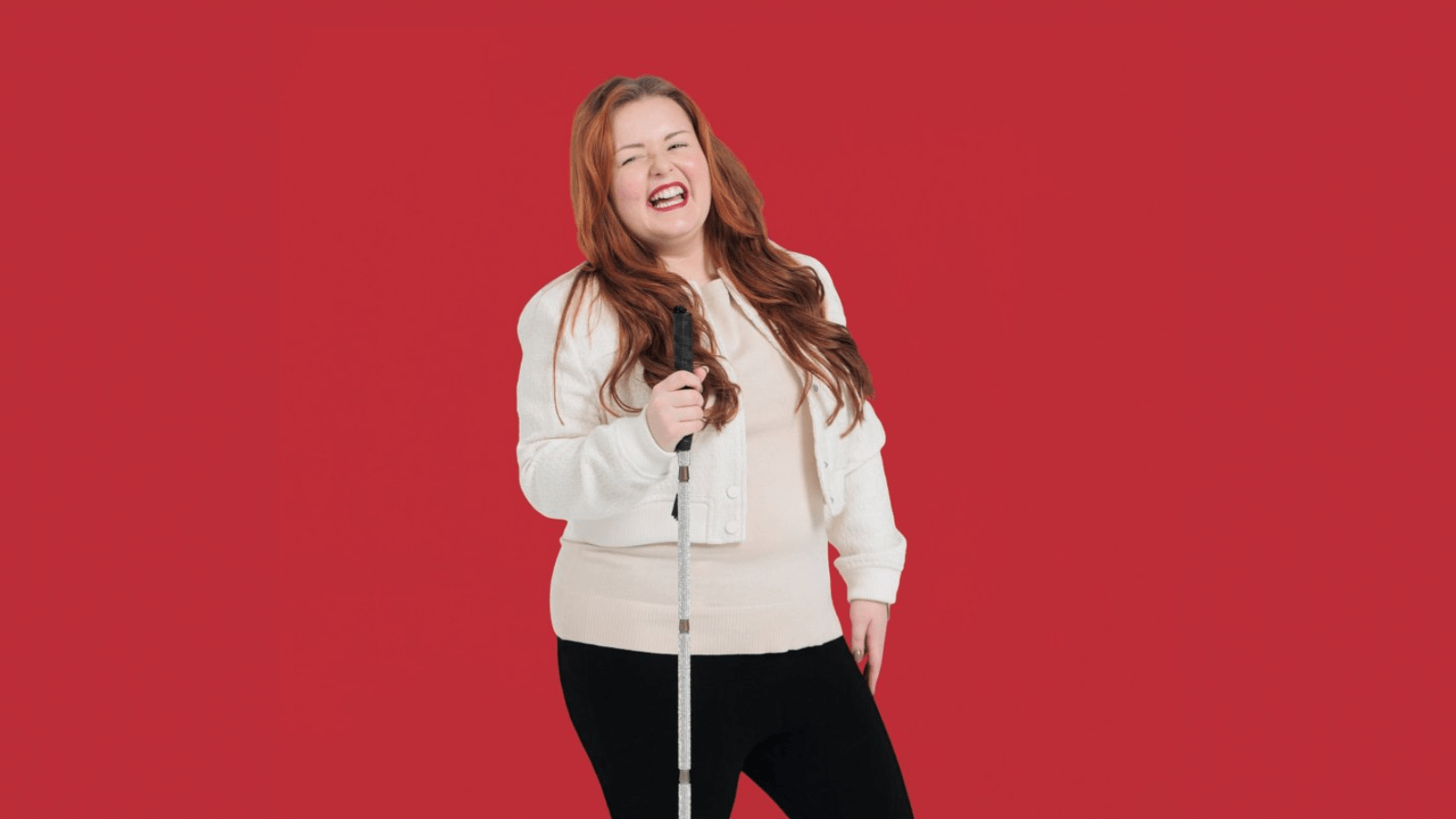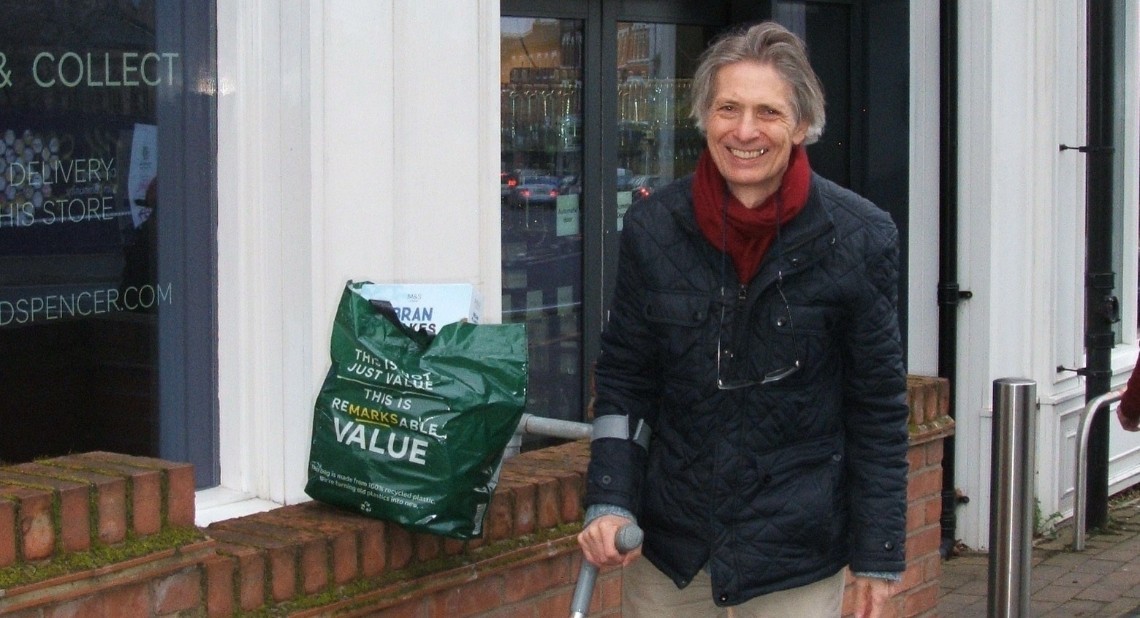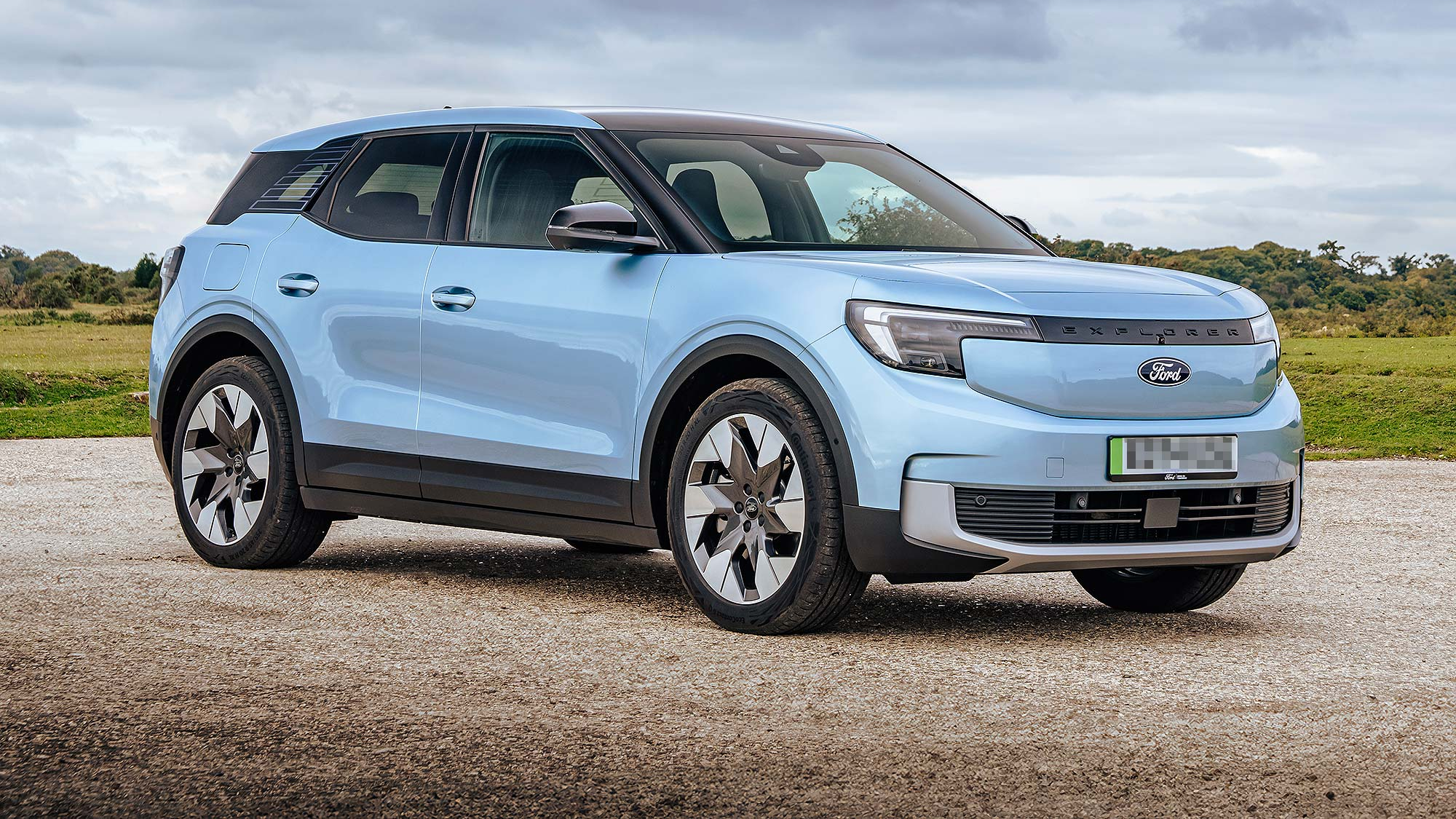Disability blogger Chloe Tear was matched with her first guide dog, Dezzie, this year. This has changed her life and given her newfound independence. Read her article where she talks about her experience.
Guide dogs are devoted companions, supporting blind and partially sighted people. After being on the waiting list for two and a half years, I was matched with my first guide dog just over six months ago. He’s called Dezzie, and he brings me immense joy and a newfound independence. He has truly changed my life.
Grabbing a coffee with Dezzie
How to get a guide dog
As my eyesight deteriorated, I started researching the process of getting a guide dog. I was born with mild cerebral palsy and have always used some form of mobility aids. I’d been using a long white cane for a few years but still needed the physical support of a walking stick. As a result, I was unable to leave the house by myself. This significantly limited my independence, and my mental health was affected.
While applying for a guide dog isn’t quick or straightforward, it is vital and ensures you get matched with the right guide dog. Not everyone who applies will get accepted onto the waiting list.
It was a combination of phone calls, forms, and in-person assessments. The whole process took about a year. The things they take into consideration are:
- Your level of eyesight and whether you will benefit from a guide dog
- Your living situation
- Your lifestyle and interests
- Your walking speed
- The routes you know and would work with a guide dog
After two and a half years, I got the phone call I’d been waiting for: “You’ve been matched with a guide dog!” I honestly have never cried so many happy tears in my life. It all moved quickly. I went on a matching walk with Dezzie to check we were a good fit for each other. Then training started two weeks after that.
Training with a guide dog
Training with a guide dog in the UK is a 5-week process and often called ‘class’. Weeks 1 and 2 were from a hotel and consisted of learning the basics. Weeks 3 to 5 are about applying what you’ve learned and doing the routes you’d take in your daily life.
I have such fond memories of being in class. It was physically and mentally challenging at times, but I accomplished so much so quickly. By week 4, I was doing a simple route by myself without a trainer. While it doesn’t sound like much, I was going on a proper walk by myself for the first time in 8 years. It was so freeing. My trust was in Dezzie, and that took some getting used to.
We qualified during the summer of 2023. The emotions were like graduating from university all over again. I like to call it my equivalent of getting my driving license. But it felt more than that. Dezzie and I were now a team, and that’s how it’s been ever since.
Our first six months together
Going to the local garden centre with Dezzie
We’ve now been in a qualified partnership for six months. It’s been incredible. And, don’t get me wrong, we’ve had to work hard at certain parts, but Dezzie was certainly a great match for me.
Since getting a guide dog, I have:
- attended a weekly yoga class where he sat on his own mat
- gone for a walk whenever I wanted
- got some chips from the fish and chip shop
- gone on a solo café trip to write a blog post
- learnt new routes
- walked in the dark
- gone shopping by myself
These sound like fairly normal things. Yet that’s almost the point. However, before getting a guide dog, this wasn’t possible. It’s important to take things slow when you first get a guide dog. While I’d love to jump on a train and explore a whole new city myself, that wouldn’t be kind to either of us.
It’s still something I’m getting used to and building up the confidence to try new things. Building up Dezzie’s confidence and strengthening our bond is also important. The first six months can be fundamental in learning the ropes and getting to know one another.
Travelling in a car with a guide dog
Luckily, Dezzie is a great dog for travelling in the car. For shorter journeys, I take his harness off, and he tucks himself into the footwell by my feet. Doing this can be helpful when getting a taxi or a lift with a friend.
Dezzie will lie in the back seat if I do a longer journey. He doesn’t wear his harness while in the car, but I have a seatbelt attached to his collar. While he’s good and doesn’t tend to move, the seatbelt ensures he’s safe if we have an accident. It’s also possible for him to go into the boot of a car. Again, he’d have a seatbelt or a kennel, making him safe.
With the Motability Scheme, individuals who are blind may qualify for allowances to access a car on the Scheme and have a named driver to drive on their behalf. As I cannot drive myself, a Motability Scheme car would mean that Dezzie and I can get out and explore more. I look forward to seeing what the next six months bring.
Interested in joining the Scheme?
About the Scheme
The Motability Scheme offers an all-inclusive package. If you are in receipt of a qualifying mobility allowance, you can use it to lease a car, scooter, powered wheelchair or Wheelchair Accessible Vehicle. The Scheme provides flexible and hassle-free access to a brand-new, reliable vehicle of your choice. As well as a great choice of cars, we also provide a wide range of Wheelchair Accessible Vehicles, scooters and powered wheelchairs.
Eligibility
To join the Scheme, you must be in receipt of one of the following mobility allowances:
- Enhanced Rate of the Mobility Component of Personal Independence Payment (PIP)
- Higher Rate Mobility Component of Disability Living Allowance (DLA)
- Higher Rate Mobility Component of Child Disability Payment – Scotland
- War Pensioners’ Mobility Supplement (WPMS)
- Armed Forces Independence Payment (AFIP)
You can easily check whether you’re eligible to join the Motability Scheme by using our eligibility checker tool.
Related articles
Travelling with an assistance dog in the UK: what you need to know
Tips and tricks on keeping your dog happy in the car
A guide to understanding assistance dogs
![]()
